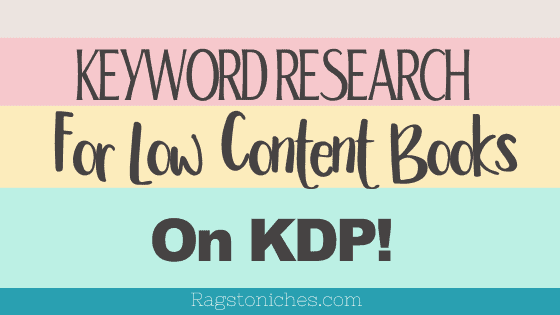
Today, I’m just going to share with you one way that you can go about doing keyword research on Amazon KDP, for your low content books.
I already did a post previously, about how I fill in my seven keyword slots and you can find that here. But today, I’m going to be briefly looking into how you can first generate some of those keywords.
There are so many ways that people do this and I am not completely strict or regimented in how I choose keywords – in a lot of ways, I use common sense.
Using common sense is exactly how I got started and that led to me generating nearly $1000 in just my third month on KDP.
At that stage I had no paid research tools whatsoever and I still do a large chunk of my own research purely using Amazon alone.
Therefore, I know it’s simply not true that you need expensive keyword research tools to succeed.
While I do use a couple of tools now to help with keyword research, they are IN ADDITION to keyword research on Amazon.
I actually feel that less is more when it comes to keywords at times…
If you add too many keywords that are not closely related enough to your product, you’re going to have less chance of ranking for the keywords your book IS relevant for.
Also, it’s possible to unearth new profitable keywords down the road, when you start running Ad campaigns using AMAZON ADS!
….But I won’t be going in depth into Ads this time.
Free Tools That You Actually Need!
Before you even start checking out Amazon, there are some tools you should get. I personally just started with AMZ suggestion expander, which is a free chrome extension.
This gives you many more keyword combinations than you would just get on your own.
Alternatively, you may want to use the Self Publishing Titans BSR keyword research tool and also the Self Publishing Titans suggestion expander.
I sometimes use both the Titans sugestioon expander and the AMZ suggestion expander as well, but they both basically do the same thing.
With the self publishing titans BSR and keyword research tool, I primarily use this to quickly see important data such as BSR, (best seller rank) and date of publication.
I don’t pay much attention to their niche/keyword score because the results are only based on the first page and the data can be misleading.
Please do not base your keywords and niches based on any tools alone at all…
You need to really look at the results on amazon for broader and more realistic picture of what is working.
Never completely rely on ANY one tool.
I repeat……… NEVER COMPLETELY RELY ON ANY KEYWORD OR NICHE RESEARCH TOOL!
You need to check out the data available right there on the Amazon platform and then just use the tools for additional info, rather than letting a tool make the decision for you.
As an example, one of the core keywords I have recently started using, had a keyword niche score of 25, (according to self publishing titans).
According to that tool, anything from 50 and up is meant to be OK.
But I am making daily sales with this book and if I’d only relied on that niche score for research, I never would have chosen it.
Yes, it could be that this keyword I’m talking about, is not the one that’s bringing me in sales.
But considering my book is found on the first page for that keyword – along with other recently published books, I think it’s likely that it is.
Plus, all of the main keywords I’d targeted for that book hadn’t had high niche scores via that tool.
The problem is, the data comes from the results on the first page and just one book with tonnes of reviews can throw everything off.
Furthermore, you should be looking beyond just the first page to get an idea about what books are selling anyway.
You may find books on page 2 and 3 selling under a slightly different keyword variation and this can lead you into further research and profitable keyword discovery.
By looking at the search results yourself manually, you may find that the books with hundreds or thousands of reviews on page one, aren’t actually relevant to the niche you’re targeting at all.
But if you look down the list, you may find other books that are relevant and are selling… Perhaps ones without any reviews yet at all!
This can be all I need for the go-ahead in many cases.
If you find a keyword/niche where there are books showing in the results that….
- Have recently published and…
- Have a decent BSR, (best-seller-rank) and…
- Have little to no reviews and….
- Have a cover design you can compete with….
These are all good signs that you may want to explore this niche further and start jotting down the keywords you can find related to it.
Then you also need to check out all those keywords you go on to find and their results.
It may sound like rather a slow process, but you can discover data each time that can potentially lead you to a whole bunch of book ideas.
If you have the free titans BSR chrome extension, you can check out the BSR of every book that comes up in the search results too, (which saves you the time of having to go into every listing!).
Alternatively, you can just go into the books listing and scroll down to the info section, to find the books BSR. But this takes a lot longer when you’re potentially checking out hundreds of books over time.
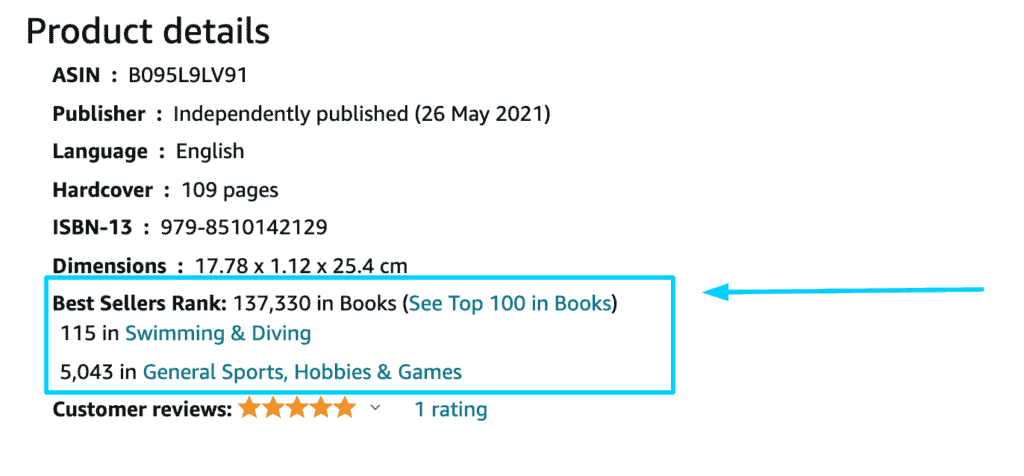
BSR stands for BEST SELLER RANK.
The lower this number is the better. So, no.1 would be one of the number one books selling on Amazon. Essentially, the lower the better!
You can roughly find out how many books are selling a day, by using the BSR calculator here….
However, take this results with a grain of salt, because how many books actually sell per day is not knowable purely by the BSR and other factors come into account.
That said, it can give you some idea about which books are selling regularly.
When I’m looking at niches to go for, I will look at roughly anything between 1-500k.
It all depends what else is available too.
For example; if I see a book is selling with a 500k BSR but it’s poor quality, then I can presume that perhaps I can get higher sales if I put something out there that is decent.
Keyword Research Starts On Amazon:
So, let’s assume that you have already broadly decided on your book idea & niche and now and you want to start looking at options for keywords to put into your title, subtitle, description and backend keyword slots.
How do you go about finding those keywords…. ?
For the first year or so, I did not have any paid tools to help with keyword selection.
I just used Amazon and the free chrome extension, AMZ suggestion expander.
I purely found my keywords using these two things alone and so can you!
I would recommend that when you first start out, you do choose to create books in niche areas that you are quite familiar with.
This is because, you’re more likely to think of and understand search terms that a prospective buyer will type into Amazon in that niche.
Your also going to be more likely to come up with some unique keywords, that people unfamiliar with the niche would likely think of.
Just imagine that you’re a swimmer and you want to create a swimming log book.
But let’s say you niche down further, you’re going to create a Wild swimming log book.
I decided to go with this niche because I’m in the UK and Wild Swimming seems to be being talked about much more these days here and becoming more popular.
So, for the purposes of this niche, I am just doing my research on Amazon UK this time.
So, you can go into Amazon and start just typing your core keyword in and see what comes up. Here I just put in “wild swimming and an L,” to get started….
But what you could do is actually go through the whole alphabet and see what comes up. You could also add in any search terms that just make sense to you.
So, Wild swimming journal, Wild swimming notebook, Wild swimming diary, Wild swimming planner… Are the obvious ones to start with.
Another good thing to do, is see what is ranking for various keywords and write down all the keywords your competitors have in their title and subtitle.
This is a way you can unearth some keywords you may never have thought of.

I should also say, that this is for your research purposes only.
Don’t just copy another authors title & subtitle.
You want to make your own unique. You don’t want your title and subtitle to just blend in with all the other books that have identical titles.

Simply go along like this, noting down any new unique keywords you haven’t already written down.

When you’re creating a book in a very narrow niche, you may not even come up with a vast amount of keywords and actually, that is OK.
While you may only get a small amount of sales for a book in a narrow niche, all your sales will add up and so, that doesn’t mean it’s not worth doing.
Personally, I have books in both highly competitive and narrow niches and I think that it’s only by experimenting with different types of books, that you can really discover what works for you.
Sometimes it is worth testing a niche with a small group of books also. That is, with varying styles – but ideally, with unique interiors.
This is because, I have personally found that often if I create a group of unique books in the same niche, some will take off and others will not.
If I had only ever published one book in a niche and moved on, I may never have realised that a niche could have worked for me.
If you have created unique books in the same niche, that are all quite different from each other style wise, you can really learn a lot about what styles/designs work best within certain niches.
Build A List Of Potential Keywords.
You’re going to want to have a list of keywords you have both thought up yourself, found via the Amazon search bar and via your competitors.
Now you want to figure out what the best keywords are to target in your title and subtitle.
You want to have your best keyword in your title and ideally a couple in your subtitle, should it look natural.
You then want a range of other keywords, with varying degrees of competition, to fit in your backend keyword slots.
To identify which keywords you want to keep – you want to start by adding them into the search bar on amazon.
If your keyword does not come up as you’re typing – it means it’s not being searched for on Amazon and you should probably just take that keyword off the list.
Some other things you want to pay attention to as you check through your keywords are…
- How many reviews books have in the results for this keyword.
- How well the books are designed…. Are there books selling quite well, that you could definitely improve on?
- How long has a book been published… (Ideally, I like to see some books that have been published within the last six months – to a year, that are making sales. To me this shows that I can also generate sales in a competitive niche, if my book is good enough. If the only books showing up are several years old and have tonnes of reviews, this is usually the sign of a highly competitive niche).
- Check how many results the keyword brings up in the Amazon search results, (higher will usually mean more competitive).
- Whether the books selling on page 1 have the keyword you’re searching for in their title or subtitle.
As you go through your keywords, many are going to be similar variations and will bring up very similar results.
You may also find that some keywords don’t bring up any books and it may be that there is very little search volume for this keyword.
That said, it can still be worth adding some of these keywords in your 7 backend slots, if you have enough space to do so.
By looking at the other books available in a niche and then searching for each keyword individually, you can usually get a good feeling for which main keywords you’re going to target.
It’s partially trial and error when it comes to keywords – but I don’t try and reinvent the wheel myself.
I don’t spend days trying to find some obscure low competition keyword that no one else has targeted.
I will figure out from what is already out there in front of me, what my core keywords will be and I save some of the more obscure ones for the backend 7 slots.
A Bonus Way To Get Keywords:
Another way to discover some extra Keywords, is actually by creating an Ad via Amazon Ads.
This isn’t a REAL Ad, you just go through the process of starting to create an Ad, in order to see some of Amazons suggested keywords.
This is a slightly more advanced method, only because it involves setting up your Amazon Ad account and you may not want to do this yet.
If you’re brand new and don’t really want to set up an account yet, then skip this bit.
If you do want to give it a go, then go to Amazon Advertising and register for an account.
Ensure you also have a KDP account at this point, as you’ll be specifically signing up here for a kindle direct publishing amazon advertising account.
Once you’re signed up and logged in, you want to find the box to tick to, “create a campaign,”
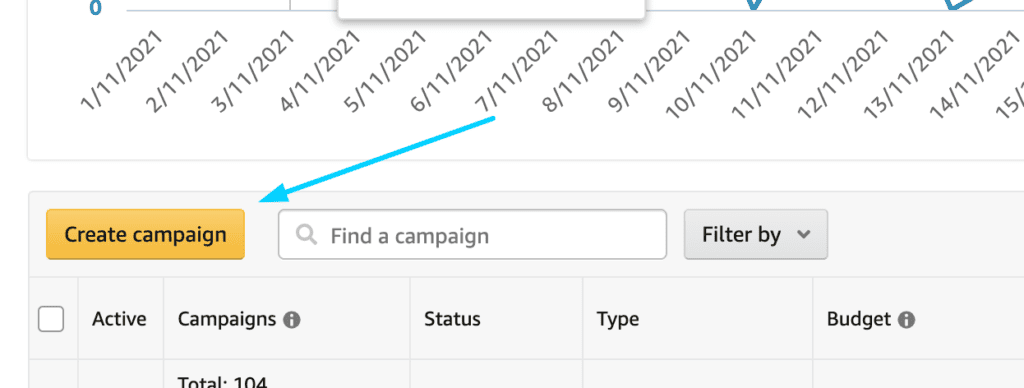
Next:
Most things you won’t really need to fill out. But just do this:
- Under the “daily budget,” selection, you will see “targeting” – click “manual,”
- Leave everything else blank and scroll down to the side heading targeting, select “keyword targeting,”
- Scroll down to “keyword targeting,” and click, “enter list.”
- In the text box below this, start typing the start of a keyword related to your book. As you start typing, a list of Amazons suggested keywords will pop up. From here I often find a bunch of keywords that I hadn’t thought of, or hadn’t found via my research.
- Start typing in variations of the keywords you’ve already come up with, to see if Amazon suggests anything new.
Note down any keywords that you don’t already have and then you can go back to Amazon, or your keyword tool, in order to validate these additional keywords and see if you want to include any in your keyword slots.
Save Me For Later:
Some Additional Info – With Publisher Rocket:
Like I said previously, I was doing well with self publishing before I had any paid tools.
I didn’t have any elaborate methods – I essentially followed what I have outlined above and frankly, half the time just used common sense rather than any strict research method.
However, I have found Publisher Rocket helpful in a couple of ways, when it comes to choosing which keywords to target.
Publisher rocket is only a one-time purchase, no monthly subscription cost, (which is what really appealed to me) and a reasonable price.
So, the things I pay attention to in Publisher Rocket are Search Volume and competition.
You can also see how much money, on average, a book makes for a certain keyword per month.
One thing I do love about Publisher Rocket is that I ALWAYS find additional keywords I hadn’t thought of previously.
Prior to using it, I definitely made the mistake of choosing some keywords with very little search volume.
While publisher rocket, (or any other tool) can only estimate the search volume of a keyword on Amazon, it’s definitely better than being entirely in the dark.
What I can see from plugging in keywords into Publisher Rocket for this niche, is the search volume is very low.
This may be enough for some people to abandon the niche altogether and not bother. But I know that books ARE selling in this niche.
Therefore, even if this only amounts to a small amount of sales each month, I may still give it a go and see what happens. It would not take very long to put a book in this niche together, so why not?
Another tool I also use is Helium 10, but I’m going to talk about that in other posts. Partially because it is a more expensive tool and I don’t think it’s necessary to learn it in order to get started.
Choosing Your Keywords & Filling In The Slots:
Again, if you’re interested in knowing how I fill in my keyword slots, I wrote a post about that here.
Of course, some people fill in their keyword slots completely differently, but this is what I stick to and it’s what has worked well for me.
When it comes to actually selecting which keywords on the list you’re going to use though, that’s not an exact science by any means and you just have to go with what works for you.
However, I always try and choose a combination of low/medium and high competition keywords.
Lower competition keywords will tend to be more longer tail, (more words overall) and the highest competition keywords will be shorter and more generic.
The idea behind choosing a combination of keywords in this way, means that if you’re lucky you will start off ranking for the lower competition keywords initially but…..
Once your book started making sales and has some reviews coming in, you start ranking for more highly competitive and shorter tail keywords.
This is what you want to happen – of course, this isn’t what always happens. But it’s the best case scenario when it does and that’s what we are striving for.
I presently have a bunch of books that now rank on page 1 for some really highly competitive terms.
But this was a gradual process over months and years, where amazon gradually pushed these books up in the amazon algorithm and they gained more visibility over time.
Publish Your Book And Then What?
Once I hit publish on a new book, I typically will just start working on another project entirely.
Amazon can take it’s time to publish your book – the minimum is usually a few days, but at very busy times, it can be much longer.
Once it’s live, it usually takes a while for the look-inside feature to show too, (where other people can check out your interior).
For some books, the look-inside feature is more important than others. But in the more important cases, I usually wait until the look-inside feature is visible, before I run Ads.
I now run Ads now on a lot of my newly published books, in order to get some of those initial sales and boost the book up in the Amazon Algorithm.
It can also be a good way to test a new book.
If I run an Ad on a brand new book and it gets impressions and no sales, then that’s a big clue to me that I need to improve the cover of the book.
There have been many cases where I have then taken down the Ad, improved the cover and then gone on to generate sales the next time.
I personally didn’t run any Ads for my first year self publishing and then I only ran Ads for books that were established already at first, (ones with reviews and sales).
After I’d created several successful campaigns and knew what seemed to work well for me with Ads, I went on to put Ads on newly published books as well.
So, I think it is best to have some general experience with Ads, before you jump into putting them on new books – but that’s just my opinion.
Fortunately, you can experiment a little with Ads at a low cost – so, that may be worthwhile if you have the budget.
Do you have any questions about this post? Let me me know in the comments! 🙂

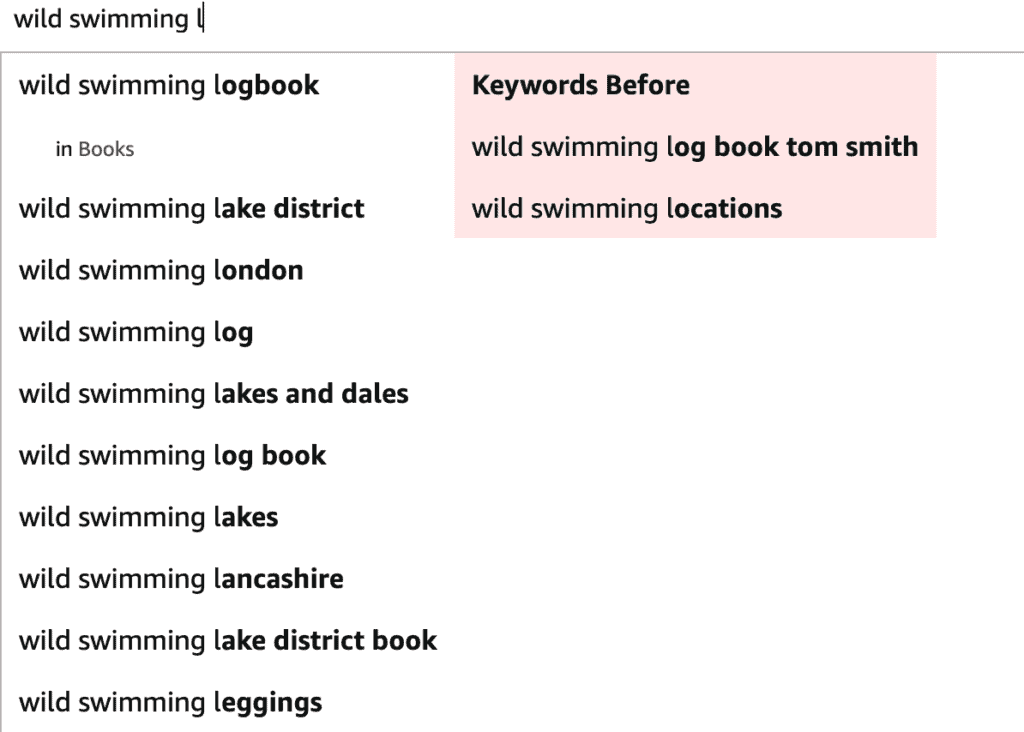
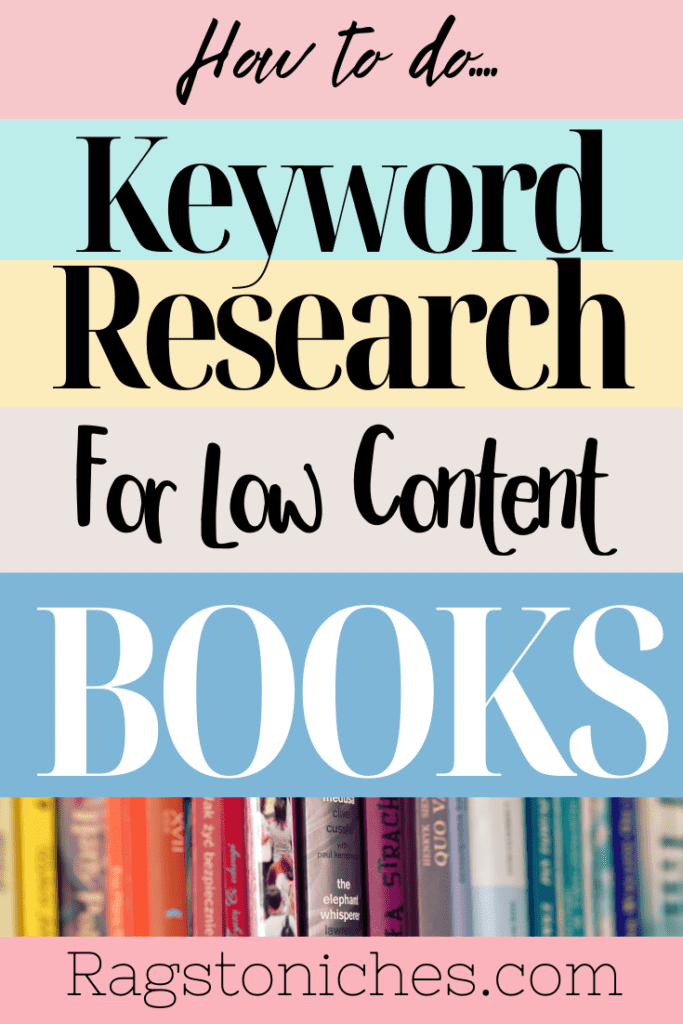
Sincere thanks for a very useful blog that has answered many questions for me.
I appreciate your candor and your willingness to help others make a success of KDP.
Hey Caroline,
I’m so glad it has been useful. :). All the best!